Archives
- By thread 5192
-
By date
- June 2021 10
- July 2021 6
- August 2021 20
- September 2021 21
- October 2021 48
- November 2021 40
- December 2021 23
- January 2022 46
- February 2022 80
- March 2022 109
- April 2022 100
- May 2022 97
- June 2022 105
- July 2022 82
- August 2022 95
- September 2022 103
- October 2022 117
- November 2022 115
- December 2022 102
- January 2023 88
- February 2023 90
- March 2023 116
- April 2023 97
- May 2023 159
- June 2023 145
- July 2023 120
- August 2023 90
- September 2023 102
- October 2023 106
- November 2023 100
- December 2023 74
- January 2024 75
- February 2024 75
- March 2024 78
- April 2024 74
- May 2024 108
- June 2024 98
- July 2024 116
- August 2024 134
- September 2024 130
- October 2024 141
- November 2024 171
- December 2024 115
- January 2025 216
- February 2025 140
- March 2025 220
- April 2025 233
- May 2025 239
- June 2025 303
- July 2025 3
-
Control the noise, set up intelligent alerts in New Relic
New Relic
It’s easy to define the exact conditions to know when to worry.
Notify your teams
Configure an alert and we'll tell you when to worry. Define the conditions you want to know about and we'll notify you when something's wrong.
Configure an alert Why you should do this
To be alerted about performance issues before they impact customers. Prevent alert fatigue with intelligent incident management.What this does
Alerts let you set thresholds and receive notifications for changes in performance metrics across your entire stack.Common uses
- Email when a health ping fails
- Get a Slack message when response times increase
- Send a push notification when a host is running out of memory
Configure an alert If you have questions along the way, check our docs, community, or take a hands-on lab.
 View in browser
View in browser
Unsubscribe or Change Your Email Address and preferences at any time.
For information about our privacy practieces, see our Privacy Policy.
Need to contact New Relic? You can chat or call us at 888-643-8776.
New Relic, Inc. 188 Spear St, San Franciso, CA 94105.
© 2021 New Relic, Inc. All rights reserved.
New Relic logo are trademarks of New Relic, Inc.
by "Max from New Relic" <mfrancisco@newrelic.com> - 12:01 - 22 Mar 2022 -
Stick with the work you love
With Subscriptions, you and the talent you trust can stick to more success together.

Subscribe to better business Who has time to look for new talent at every project turn? You don’t.
With Subscriptions, you can set your best business activities on repeat.
From content, graphic, and video creation to website maintenance, SEO, and more, get recurring services from an expert you already trust with your brand and business goals.
With Subscriptions you can: Set expert services on repeat
Skip the back-and-forth and make sure your seller carves out time for you in advanceEnjoy exclusive discounts
Many sellers thank subscribers for their loyalty with discounts on their servicesTailor your orders to your needs
Get high quality services that suit your individual needs working for you behind the scenesReach out to your expert of choice to set up Subscriptions every month, week, or day – whatever works best to get the important work done! Repeat What Works Not sure yet if you’re ready? No worries! Try it out for a month and cancel anytime. 




Privacy Policy | Support | Invite a Friend | Get Inspired
This email was sent to you by Fiverr International Ltd.
You are receiving this email because you signed up for Fiverr.
If you wish to unsubscribe from all future emails, please click here
Fiverr International Ltd. | 38 Greene St. | New York, NY 10013, USA

by "Fiverr" <no-reply@fiverr.com> - 10:06 - 22 Mar 2022 -
Remote Connect 2022 is only 2 weeks away!
Remote Connect 2022 is only 2 weeks away!
We’ll have a lot more episodes featuring answers to questions like:
- How to scale a Finance team when you’re experiencing hypergrowth?
- How to remove barriers for engineering teams to work better remotely?
- Hiring abroad from France
more event sessions
Gathering In the New World of Work
Priya Parker, author and host of the NYT podcast Together Apart will share practical guidance on how to rethink and rebuild a post-pandemic approach to gathering.
Fostering well-being at work
Arianna Huffington, Founder & CEO of Thrive and one of Time’s 100 most influential people, will talk about the role and responsibility of leaders in improving the way we work.
You received this email because you are subscribed to Events communication from Remote Technology, Inc.
Update your email preferences to choose the types of emails you receive.
Unsubscribe from all future emailsRemote Technology, Inc.
Copyright © 2022 Remote Technology, Inc. All rights reserved.
18 Bartol St. #1163 San Francisco California
by "Remote" <hello@remote-comms.com> - 10:02 - 22 Mar 2022 -
Join us tomorrow for our webinar, “Accelerating Digital Transformation with Observability”
Hi Abul,
We would like to invite you to our virtual event, “Accelerating Digital Transformation with Observability,” which will take place tomorrow at 14:00 CET.
We will begin the session with a discussion on the challenges that organizations face during a cloud migration—from building a CCoE to adopting a strong DevOps culture. We will also examine how these organizations must adjust their monitoring strategies for their new cloud environments, and how this transformation can impact their growth, costs, and assumed risks.
This discussion will be followed by a product demo and a live Q&A session.
We look forward to hosting you virtually!
Cheers, Ali ShawTeam Lead, Sales Engineering
Ali ShawTeam Lead, Sales EngineeringVisit our email preference center to unsubscribe or change subscription options
©2022 Datadog Inc, 620 8th Ave, 45th Floor, New York, NY 10018This email was sent to info@learn.odoo.com.
by "Ali Shaw" <events@datadoghq.com> - 04:02 - 22 Mar 2022 -
Health equity: A framework for the epidemiology of care
the Daily read
Understand the issues .
Share this email 



AN ARTICLE A DAY, PICKED BY OUR EDITORS 
Better healthcare is an absolute good. But whose health concerns have we been solving for? The analysis changes as we think through an equity lens. Indeed, health inequities manifest in a variety of ways: limited access to food, care, or medication; unmet needs, when innovation is misaligned with disease burdens; or underserved communities, when key actors fail to engage groups commensurate with their needs. Addressing the issues has obvious benefits for patients—and the pharmaceutical and life sciences companies that serve them. A new article outlines a framework to approach health equity, recognize its limits, and sharpen decision making. Don’t miss it. — Torea Frey, managing editor, Seattle 
Health equity: A framework for the epidemiology of care Pharmaceutical and life sciences companies can unlock new opportunities, help underserved patients, and build a cycle of trust. Understand the issues 

Quote of the Day —See what organizations can do to promote sociocultural-diversity initiatives in “Beyond gender: Promoting diversity in French companies” 
Chart of the Day 
See today’s chart 
Also New 

War in Ukraine: Lives and livelihoods, lost and disrupted As uncertainty weighs on decision making, scenarios can provide guidance. Understand the implications 


Germany’s e-health transformation makes uneven progress Our eHealth Monitor report shows solid uptakes of telemedicine and consumer health apps. But e-prescriptions, health data exchange, and patient use of electronic health records are lagging behind. Understand the trends 


Building next-generation B2B sales capabilities The pandemic has converted B2B buyers to e-commerce in a big way. B2B sellers need new capabilities to meet their new expectations. Deliver outperformance 


Follow our thinking 



Share these insights Did you enjoy this newsletter? Forward it to colleagues and friends so they can subscribe too.
Was this issue forwarded to you? Sign up for it and sample our 40+ other free email subscriptions here.This email contains information about McKinsey’s research, insights, services, or events. By opening our emails or clicking on links, you agree to our use of cookies and web tracking technology. For more information on how we use and protect your information, please review our privacy policy. You received this email because you subscribed to the Daily Read newsletter. Manage subscriptions | Unsubscribe Copyright © 2022 | McKinsey & Company, 3 World Trade Center, 175 Greenwich Street, New York, NY 10007
by "McKinsey Daily Read" <publishing@email.mckinsey.com> - 06:10 - 21 Mar 2022 -
Here comes the 21st century’s first big investment wave. Is your capital strategy ready?
McKinsey&Company
Prepare for big changes .
Share this email 



New from McKinsey Quarterly 
Here comes the 21st century’s first big investment wave. Is your capital strategy ready? A surge of investment in hard assets will pressure already strained supply chains and project delivery systems. CEOs who transform their capital strategy fast—and first—may win a competitive edge. Prepare for big changes 



Related Reading 
The CEO: Architect of the new operations agenda 
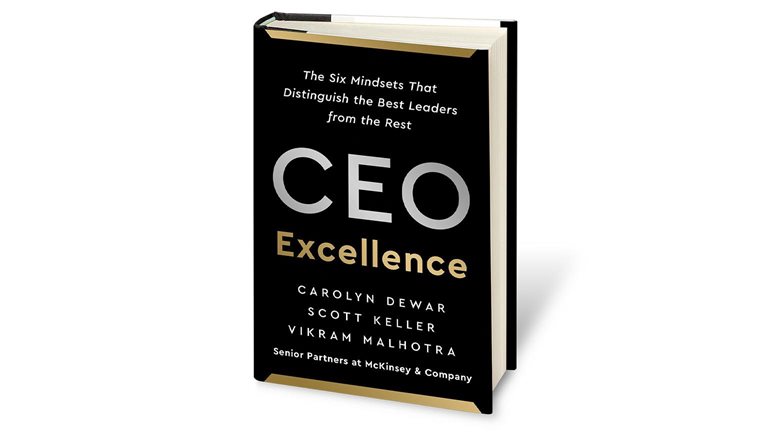
CEO Excellence: The Six Mindsets That Distinguish the Best Leaders from the Rest 


Follow our thinking 


McKinsey Insights - Get our latest
thinking on your iPhone, iPad, or Android


Share these insights Did you enjoy this newsletter? Forward it to colleagues and friends so they can subscribe too.
Was this issue forwarded to you? Sign up for it and sample our 40+ other free email subscriptions here.This email contains information about McKinsey’s research, insights, services, or events. By opening our emails or clicking on links, you agree to our use of cookies and web tracking technology. For more information on how we use and protect your information, please review our privacy policy. You received this email because you subscribed to our McKinsey Quarterly alert list. Manage subscriptions | Unsubscribe Copyright © 2022 | McKinsey & Company, 3 World Trade Center, 175 Greenwich Street, New York, NY 10007
by "McKinsey & Company" <publishing@email.mckinsey.com> - 02:52 - 21 Mar 2022 -
Putting the ‘success’ in succession planning: A leader’s guide
Leading Off
Future state .
Share this email 



ESSENTIALS FOR LEADERS AND THOSE THEY LEAD 
Replacing top leaders isn’t always a smooth process for organizations. Many a CEO exit has been marked by power struggles, scandals, and dips in the company’s stock price. Now, as record numbers of employees leave the workplace, companies are hard-pressed to find replacements for any job, let alone leadership roles that require years of coaching and experience. Crafting a succession plan may be the last thing on leaders’ minds as they manage the daily upheavals of the postpandemic era. Yet without one, the company risks going rapidly downhill during a changing of the guard, losing revenue and market share. This week, let’s explore some strategies that make it easier to prepare for both planned and unplanned leadership departures. AN IDEA 
Ensure that your candidates can navigate future trends In today’s unpredictable environment, leaders at all levels must be prepared to adapt quickly. When evaluating potential successors, consider how swiftly your preferred candidates are likely to respond to trends that the pandemic has accelerated and that will shape the future. Sustainability, for example, is no longer just a nice-to-have: it is as vital to competitive advantage as agility or digital transformation. So is the ability to develop talent and ensure that people have a sense of purpose in their work. Other priorities include speeding up operations and deploying cloud capabilities to advance innovation and productivity. Do your prospects for leadership roles have the mindset to embrace these challenges and come up with creative solutions? The answer to this question can help you separate the best candidates from the rest. 
A BIG NUMBER 86 That’s the number of women promoted to manager for every 100 men, according to the latest Women in the Workplace report from McKinsey, in partnership with LeanIn.Org. This “broken rung” in the corporate ladder results in fewer women reaching the leadership level. Both women and minorities continue to be underrepresented on corporate boards. Given the recent exodus of employees and increasing public calls for diversity in the workplace, it’s shortsighted to overlook these sources of leadership talent—whether internal or external—as well as previously untapped candidate pools such as differently abled professionals. And with workplaces becoming more remote, virtual, and flexible, your talent search can now extend across geographical boundaries. 

A QUOTE “It does not do to leave a live dragon out of your calculations, if you live near him.” Wise words for Bilbo and company in J.R.R. Tolkien’s fantasy classic The Hobbit, and this sage advice applies to anyone undertaking a venture that may hold hidden risks. Many traps lie in wait for companies that do not have a robust succession plan in place. Disability or illness may strike top leaders suddenly, throwing organizations into chaos, exposing critical strategic gaps and endangering their market position. Internal bickering and controversies could ensue if leaders are not transparent about their succession plans and if they do not consider a range of candidates—in age, gender, ethnicity, and background—to fill prominent roles. As such, it’s essential for any succession plan to be legally and ethically watertight. 
A SPOTLIGHT INTERVIEW 
If you’ve watched the popular TV series Succession, you know the trouble that can break out when a founder prepares to leave the business. Well-crafted succession plans fall apart as family members and outsiders battle for control. But that wasn’t the case at online real-estate marketplace PropertyGuru, whose cofounder Steve Melhuish implemented a meticulous three-step plan to ensure an orderly transition to a new CEO. In the process, he gathered six key succession planning insights, which he shares in an interview with McKinsey. “The candidate profile we developed placed a heavy emphasis on culture, values, and talent development, as well as experience in building fast-growing businesses,” Melhuish says. 
HOUSTON, WE HAVE A PROBLEM 
Your star protégé has finally made it to a leadership role, but it just isn’t working out. This is a fairly common scenario: McKinsey research shows that between 27 and 46 percent of executive transitions are viewed as failures or disappointments after two years. Newly appointed leaders rarely see value in standard training approaches such as “buddy” networks and orientation programs, but they can take steps in five focus areas to ensure a better transition. To improve the chances of a successful executive transition, consider setting up a formal capability-building program to develop staff for future leadership roles. It also helps if outgoing leaders take an active and structured approach to their last days on the job, leaving things in good shape for their successors. Lead successfully. — Edited by Rama Ramaswami, a senior editor in McKinsey’s Stamford office 

Follow our thinking 



Share these insights Did you enjoy this newsletter? Forward it to colleagues and friends so they can subscribe too.
Was this issue forwarded to you? Sign up for it and sample our 40+ other free email subscriptions here.This email contains information about McKinsey’s research, insights, services, or events. By opening our emails or clicking on links, you agree to our use of cookies and web tracking technology. For more information on how we use and protect your information, please review our privacy policy. You received this email because you subscribed to the Leading Off newsletter. Manage subscriptions | Unsubscribe Copyright © 2022 | McKinsey & Company, 3 World Trade Center, 175 Greenwich Street, New York, NY 10007
by "McKinsey Leading Off" <publishing@email.mckinsey.com> - 02:32 - 21 Mar 2022 -
Offices aren’t going away—but they’re looking quite different
McKinsey&Company
Time to redesign .

The office, redux In the news • Rethinking where we work. While many employees are still working from home, companies are considering what to do with their existing offices. Some are downsizing. Others are redesigning their offices into spaces where employees collaborate and work together, versus perform individual tasks 9-to-5 style. And still other organizations are building new offices, including elaborate showplace headquarters. More than half—57%—of a global architecture firm’s current 2,300 projects, for example, were started last year. [Fortune] • Lobby makeover. Office lobbies across the US are undergoing renovations—but they may not be as noticeable as some of the security-inspired additions of the past, such as cameras and extra security guards. These latest updates, prompted by a focus on health and safety, are meant to streamline entrances and reduce direct contact. Workers can potentially expect air sensors and body scanners, as well as mobile apps that replace manual check-in processes and ID badges. [NYT] 
“Research reveals that workers with unassigned office space are among the most dissatisfied in the workplace and the least effective.” 
On McKinsey.com • New working models. The role of the workplace has dramatically shifted over the past two years, during which 42% of the US labor force (making up almost two-thirds of US economic activity) began working from home. Now, as offices look to reopen after multiple stops and starts, organizations are thinking about how work is—and can be—done. The stigma around remote-working models is mostly gone; certain studies also show that remote-working options don’t negatively impact productivity and may even give more workers better opportunities to thrive. • Reinvented workplaces. For Diane Hoskins, co-CEO of global design and architecture firm Gensler, well-designed workplaces—ones that optimize performance and keep employees safe—have always been top of mind. And now that COVID-19 has disrupted workplace norms for good, she’s considering how to address organizations’ new needs, including employees who want flexible working models and are willing to switch jobs to get them. Hoskins spoke with McKinsey about how organizations can reinvent their workplaces after two years of pandemic-induced disruption, and why she believes that human-centric workspaces will help organizations emerge stronger. — Edited by Justine Jablonska Design for the future 
Was this forwarded to you? Sign up here. Or send us feedback — we’d love to hear from you. 

Follow our thinking 


This email contains information about McKinsey’s research, insights, services, or events. By opening our emails or clicking on links, you agree to our use of cookies and web tracking technology. For more information on how we use and protect your information, please review our privacy policy. You received this email because you subscribed to the On Point newsletter. Manage subscriptions | Unsubscribe Copyright © 2022 | McKinsey & Company, 3 World Trade Center, 175 Greenwich Street, New York, NY 10007
by "McKinsey On Point" <publishing@email.mckinsey.com> - 12:09 - 21 Mar 2022 -
Make humans more efficient with SOAR
Sumo Logic
Last chance to register!
 Join Sumo Logic tomorrow for a 30-minute session on Cloud SOAR with live Q&A. Register now and get the recording after the session.
Join Sumo Logic tomorrow for a 30-minute session on Cloud SOAR with live Q&A. Register now and get the recording after the session.
Cloud SOAR, March 29th at 12pm AEST Sumo Logic’s Cloud SOAR boosts the effectiveness of security analysts by providing automated real-time incident management responses, immediate and customisable incident reports, and invaluable insights regarding incoming alerts, ultimately enhancing the accuracy and speed at which SOC teams respond to threats. Register We look forward to you joining us for a live demo with the experts. Please let us know if you have any questions ahead of time.
Sumo Logic
I'm not interested in this series.
Sumo Logic, Level 9, 64 York Street, Sydney, NSW 2000
© 2022 Sumo Logic, All rights reserved.Unsubscribe 


by "Sumo Logic" <marketing-info@sumologic.com> - 06:00 - 20 Mar 2022 -
The week in charts
the Daily read
Upgrading supply-chain systems, chronic absenteeism in schools, and more .
Share this email 



ALL THE WEEK’S DATA THAT'S FIT TO VISUALIZE 
Our Charting the path to the next normal series offers a daily chart that helps explain a changing world—during the pandemic and beyond. In case you missed them, this week’s graphics explored why companies should upgrade their supply-chain-planning systems, chronic absenteeism in schools, the growing disconnect between patients and physicians when it comes to telehealth, how the pandemic triggered a jolt of growth in the net worth of US households, and how implementing safety and accessibility initiatives can improve urban transit systems. FEATURED CHART Spreadsheet jockeys, hang up your spurs 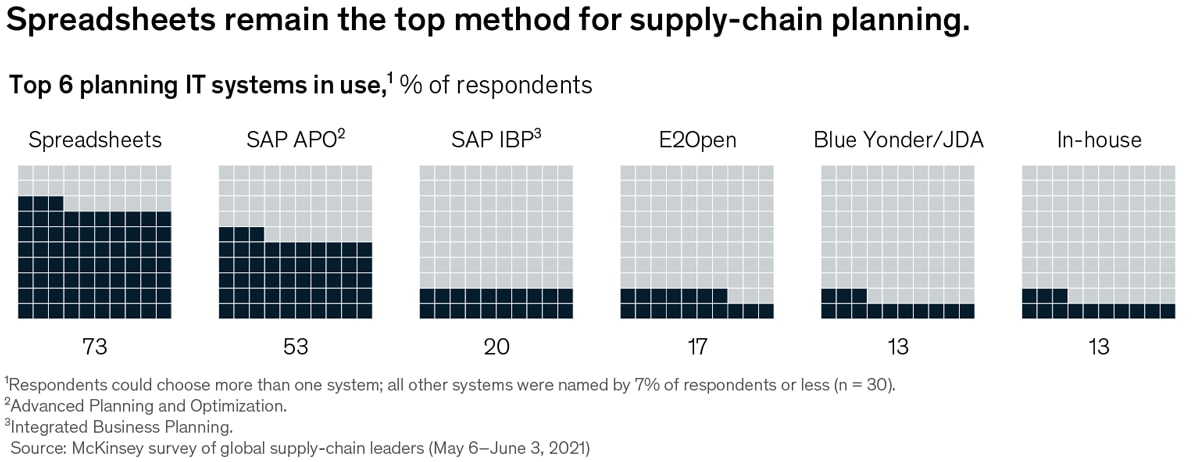
See more 



This week’s other select charts Cutting class—often IRL versus URL A good year for shareholders Mapping public transportation’s pain points 

Follow our thinking 



Share these insights Did you enjoy this newsletter? Forward it to colleagues and friends so they can subscribe too.
Was this issue forwarded to you? Sign up for it and sample our 40+ other free email subscriptions here.This email contains information about McKinsey’s research, insights, services, or events. By opening our emails or clicking on links, you agree to our use of cookies and web tracking technology. For more information on how we use and protect your information, please review our privacy policy. You received this email because you subscribed to The Week in Charts newsletter. Manage subscriptions | Unsubscribe Copyright © 2022 | McKinsey & Company, 3 World Trade Center, 175 Greenwich Street, New York, NY 10007
by "McKinsey Week in Charts" <publishing@email.mckinsey.com> - 03:46 - 19 Mar 2022 -
The future of global economic growth
McKinsey&Company
Productivity is the key .
Share this email 



McKinsey Classics | March 2022 
The future of global economic growth In 2014, to celebrate McKinsey Quarterly’s 50th anniversary, the McKinsey Global Institute (MGI) examined the future prospects for economic growth throughout the world. Economic growth depends on two things: population and output per worker, or productivity. From 1950 to the mid-1980s—the golden years following World War II—population rose strongly, and output per worker rose even more strongly. Productivity, therefore, generated an ever-rising proportion of an ever-rising global GDP. But by 2014, population growth had slowed or ended in most countries outside Africa. Rates of economic growth seemed poised to falter. MGI, however, pointed out that economies and industries could still raise their GDP growth by raising their labor productivity. The chief opportunities to do so all involve encouraging competition: regulatory changes to promote it; reduced barriers to global trade and foreign direct investment, which have the same effect; and innovative private-sector companies that force their industries to change. Will the world economy make good on these opportunities? That depends on the ingenuity of managers and engineers and on the willingness of policy makers to undertake reforms, particularly in countries and sectors with big productivity gaps. Read “A productivity perspective on the future of growth.” — Roger Draper, editor, New York Understand productivity’s importance 



Related Reading 
Will productivity and growth return after the COVID-19 crisis? 

Solving the productivity puzzle 

Getting tangible about intangibles: The future of growth and productivity? 

Did You Miss Our Previous McKinsey Classics? 

How to make scenario planning more effective As a classic article put it in 2015, “Scenario planning can broaden the mind but can fall prey to the mind’s inner workings.” Learn how to control them: read “Overcoming obstacles to effective scenario planning.” Develop effective scenarios 





Follow our thinking 


McKinsey Insights - Get our latest
thinking on your iPhone, iPad, or Android

This email contains information about McKinsey’s research, insights, services, or events. By opening our emails or clicking on links, you agree to our use of cookies and web tracking technology. For more information on how we use and protect your information, please review our privacy policy. You received this email because you subscribed to our McKinsey Classics newsletter. Manage subscriptions | Unsubscribe Copyright © 2022 | McKinsey & Company, 3 World Trade Center, 175 Greenwich Street, New York, NY 10007
by "McKinsey Classics" <publishing@email.mckinsey.com> - 11:55 - 19 Mar 2022 -
War in Ukraine: Lives and livelihoods, lost and disrupted
the Daily read
Understand the implications .
Share this email 



AN ARTICLE A DAY, PICKED BY OUR EDITORS 
Russia’s invasion of Ukraine has caused the greatest humanitarian crisis in Europe since World War II. Uncertainty is high. How can leaders get to grips with the dynamics of this unfolding crisis? A new article provides perspective on the war’s short- and midterm disruptions and frames scenarios to understand the potential impact on livelihoods in the eurozone. Stay informed as the world navigates this challenging period. — Joyce Yoo, digital editor, New York 
War in Ukraine: Lives and livelihoods, lost and disrupted As uncertainty weighs on decision making, scenarios can provide guidance. Understand the implications 

Quote of the Day “One of our tenets of health equity is the diversity of our employees, which we see as a strength. We aim to hire from the communities we serve—they look like the members they serve or speak the language—there’s a trust factor there.” —Errol Pierre, senior vice president of state programs at Healthfirst, on working with diverse communities in a new episode of the McKinsey on Healthcare podcast 
Chart of the Day 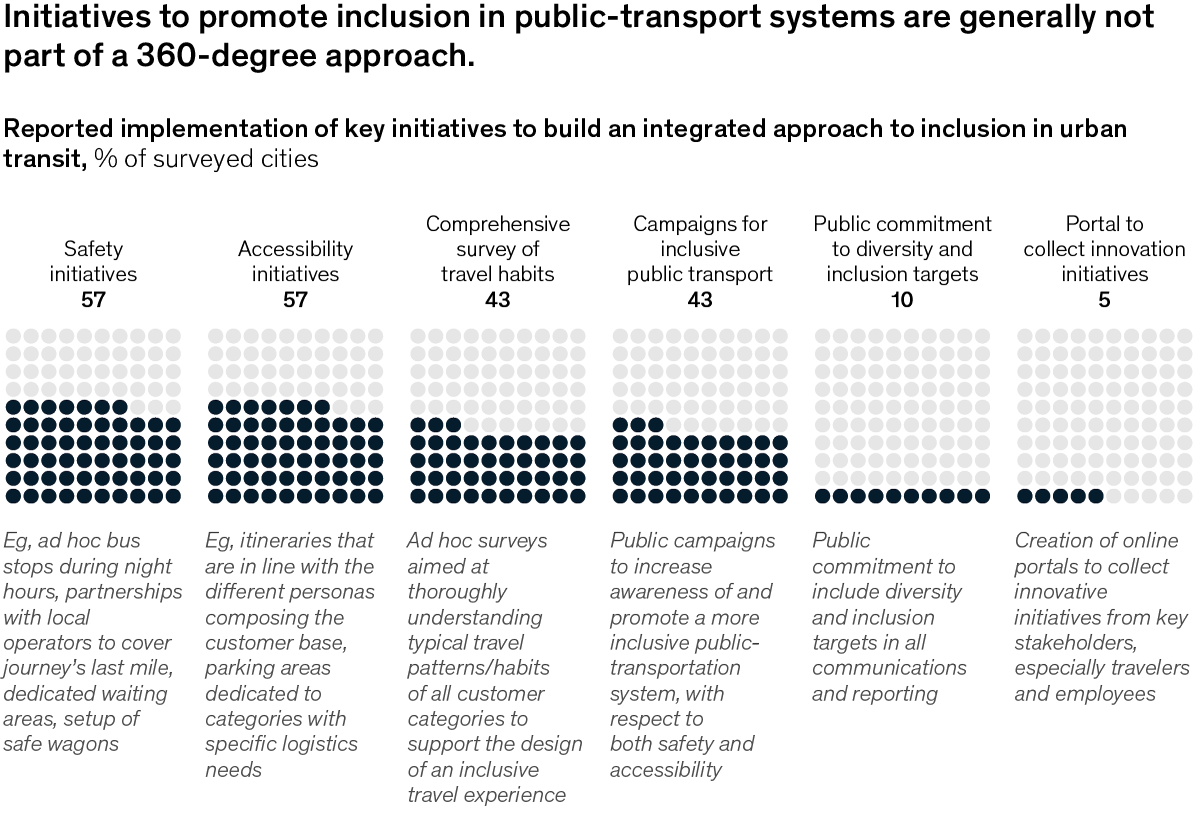
See today’s chart 
Also New 

2022 and beyond for the packaging industry’s CEOs: The priorities for resilience The revolution sparked by two megatrends—sustainability and digital—is unprecedented in the packaging industry. We highlight six priority moves for industry participants as they seek to build their resilience. Understand key strategies 


COVID-19: Where we’ve been, where we are, and where we’re going When lockdowns began in early 2020, few of us imagined the long road ahead. While progress in protecting lives and livelihoods was swift, new variants and other factors have since meant that there have been times when the virus has seemed to be one step ahead of every countermeasure. Explore the collection 


ICE businesses: Navigating the energy-transition trend within mobility Electric vehicles are gaining market share, but ICE-component suppliers can still create significant value while advancing sustainability. Understand industry shifts 


Follow our thinking 



Share these insights Did you enjoy this newsletter? Forward it to colleagues and friends so they can subscribe too.
Was this issue forwarded to you? Sign up for it and sample our 40+ other free email subscriptions here.This email contains information about McKinsey’s research, insights, services, or events. By opening our emails or clicking on links, you agree to our use of cookies and web tracking technology. For more information on how we use and protect your information, please review our privacy policy. You received this email because you subscribed to the Daily Read newsletter. Manage subscriptions | Unsubscribe Copyright © 2022 | McKinsey & Company, 3 World Trade Center, 175 Greenwich Street, New York, NY 10007
by "McKinsey Daily Read" <publishing@email.mckinsey.com> - 06:16 - 18 Mar 2022 -
Climate change: How we can prevent the worst effects
The Shortlist
Plus, what’s new in packaging .
Share this email 



Our best ideas, quick and curated | March 18, 2022 View in browser 
This week, we look at what it will take for the world to transition to net-zero greenhouse-gas emissions. Plus, the latest trends in packaging, and a bold new strategy for European software. 
Our changing climate. Lethal heat waves, hurricanes migrating beyond the tropics, droughts that last for decades: the world is seeing the effects of climate change ever more clearly. Amid climate risks that are expected to grow more frequent and extreme, countries and companies worldwide are calling for net-zero emissions. It’s a huge undertaking, but here are some ways that governments, businesses, and individuals can prepare. Trillions to transform. As much as $3.5 trillion in additional spending on physical assets will be needed each year from 2021 to 2050, a McKinsey analysis reveals. During the transition, substantial amounts of capital will also have to be reallocated from high-emissions assets to low-emissions ones. Financial institutions are likely to play a key role in reallocating capital on a large scale. Millions of jobs gained and lost. A fundamental transformation of the global economy would have profound implications for the world’s labor markets. About 200 million jobs may be gained and 185 million lost by 2050 in the transition, based on an analysis of sectors that produce about 85 percent of global emissions. Businesses can help make the case for change and help workers build new capabilities. Companies are also likely to need new data, talent, and infrastructure. For example, using digital platforms may enable firms to better track greenhouse-gas emissions embedded in their operations and supply chains. Leaders will also need to build climate considerations into frameworks for making key decisions. A looming materials shortage. The transition to net-zero emissions by 2050 would open up new markets for low-emissions products and services. Decarbonizing processes and products can make companies more cost-effective, in some cases. But companies are also facing looming shortages of low-emissions resources. Green materials are needed to reduce emissions from supply chains, but demand for some low-emissions materials may far exceed supply by the next decade, McKinsey research shows. For instance, in 2030, Europe’s demand for green steel could be two times the amount that’s available. Using digital modeling tools to understand various supply and demand scenarios and implications for pricing may enable companies to better cope with green-materials shortfalls. Governments’ role. Similar to businesses, governments can develop decarbonization plans and use policy, fiscal, and regulatory tools to create incentives. Since the net-zero transition would unevenly affect countries and sectors, governments would also need to manage the varying effects on communities and industries. Public-sector organizations can develop social-support programs that help citizens acquire new skills and jobs , and provide economic relief for lower-income workers. They can also hasten research and development that would lower the cost to acquire clean technologies. It’s on us. Finally, individuals can keep learning about climate change and how the net-zero transition might affect consumers and workers. People may need to adopt new habits and behaviors. For example, consumers might eat less beef, drive electric cars, and improve the energy efficiency of their homes. The journey to a net-zero future may be risky, but it’s also full of opportunity. More important, we’ll have helped the planet become a more hospitable place not only for humans but for all creatures on earth. 
OFF THE CHARTS In the US, students in majority-Black schools fall further behind School closures, quarantines, and lagging attendance: sadly, students in majority-Black schools have fallen even further behind their peers in majority-White schools. Before the COVID-19 pandemic, US elementary-school students in majority-Black schools had nine months of math curriculum still to learn when compared with other students. That gap has since widened to a year. 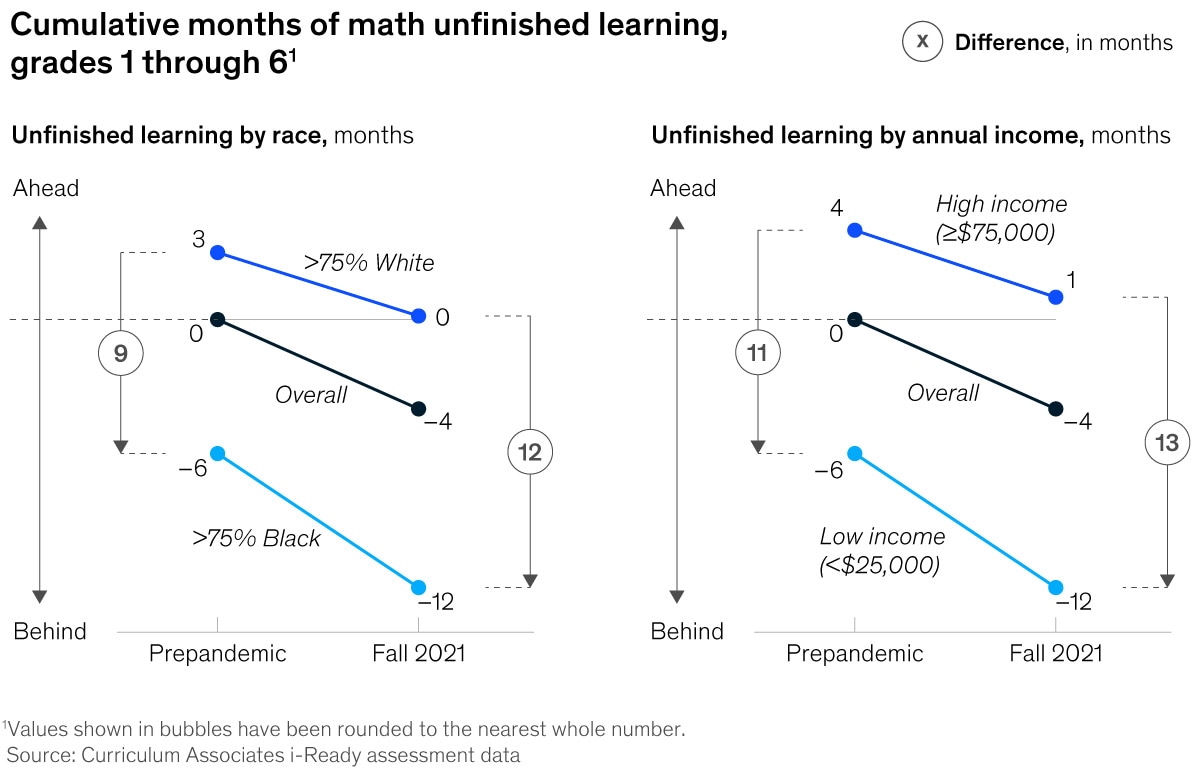
Check out our chart of the day here. 

PODCAST Wrapping it up: What’s new in packaging In this edition of the McKinsey on Consumer and Retail podcast, Ron Delia, CEO and managing director of global packaging company Amcor, reveals how e-commerce is creating new demands on packaging. “Just take any grocery item; it could be pasta sauce in a rigid container or rice in a flexible package. Everything that the item’s package does in a traditional brick-and-mortar retail channel, it has to do in the e-commerce channel—and then some,” says Delia. In addition, in online retail, the “moment of truth” is when the consumer opens the box, so that experience needs to be compelling, Delia added. 
MORE ON MCKINSEY.COM Reversal of fortune: How European software can play to its strengths | Europe’s relative lack of top software firms threatens its economic competitiveness. It’s time for the private sector to stop trying to play catch-up and take a new approach. How to navigate mining’s cash-flow conundrum | The mining industry’s commodity prices have been on an upswing. Our analysis of the industry’s cash flow management could help leaders maximize value. US wealth management: A growth agenda for the coming decade | As hopes for a postpandemic recovery grow, the financial industry must prepare for the changes in technology, consumer needs, and society that will shape the future of wealth management. 
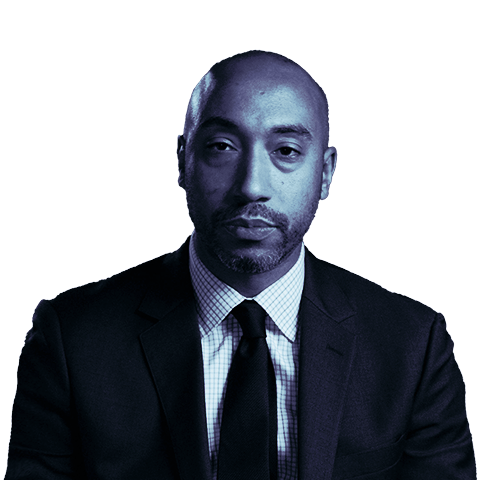
THREE QUESTIONS FOR Shelley Stewart III McKinsey partner Shelley Stewart III was recently recognized as one of Crain’s New York Business’s Notable Black Leaders of 2022. Shelley, who leads McKinsey’s research on US Black economic mobility, founded and directs the McKinsey Institute for Black Economic Mobility. In this interview, he reflects on Black leadership in the workplace. This is an edited excerpt. How did your upbringing influence your development as a leader? I absolutely saw this level of determination every day from both of my parents, who both went to work every day and had to deal with all sorts of things that folks who are Black had to deal with, and in my mom’s case, being Black and also a woman. I was party to those discussions at night at the dinner table about issues that they were facing. The spirit of it was never complaining. It was more about understanding the reality of the situation that we’re in. [It was also about] recognizing that as you progress, you have an obligation to bring more people through the door. That’s something that’s always stayed with me. You’ve got to open doors, create opportunities for folks who look like you, who traditionally have not been given these opportunities. The whole of your success will not be based on the level that you rose to but actually on how many people that you directly helped to bring along that journey so that they can progress and provide more for their family. What are some solutions for a more equitable future? If you invest in people, in human capital that is here in this country, that has been traditionally underinvested in, then that is a high ROI way to use your money because that is a local economic-development lever. We are better off as a society if we are educating our people to be more book smart and providing adequate healthcare so that they are healthy. That allows them to later be more productive in the workforce, as entrepreneurs and investors, and that is an economic engine. This whole idea of economic empowerment of Black Americans is at the core of sustainable, inclusive growth. Some people may say, well, why focus on Black Americans? That’s just because if you can solve it for Black Americans, than you’ve got seeds of the solution for all Americans living close to the poverty line, because Black Americans are disproportionately the poorest and from an income perspective and from a wealth perspective, they suffer from very limited economic mobility, if you look historically. Black Americans have faced limited mobility for generations. Have we as a society made any progress? If you look at educational attainment, that’s one area where, objectively, you can say we’ve seen progress. It started when you were in high school and going into college. We’ve seen some gains at some of the higher levels. And you’ve seen [it with] some CEOs and [in] some boardrooms. But that prosperity for Black Americans is not broadly shared. In the US, the opportunity to increase the number of Black-owned businesses and support Black entrepreneurs is substantial. — Edited by Belinda Yu Share this Q&A 



BACKTALK Have feedback or other ideas? We’d love to hear from you. 
Tell us what you think 

Follow our thinking 



Share these insights Did you enjoy this newsletter? Forward it to colleagues and friends so they can subscribe too.
Was this issue forwarded to you? Sign up for it and sample our 40+ other free email subscriptions here.This email contains information about McKinsey’s research, insights, services, or events. By opening our emails or clicking on links, you agree to our use of cookies and web tracking technology. For more information on how we use and protect your information, please review our privacy policy. You received this email because you subscribed to The Shortlist newsletter. Manage subscriptions | Unsubscribe Copyright © 2022 | McKinsey & Company, 3 World Trade Center, 175 Greenwich Street, New York, NY 10007
by "McKinsey Shortlist" <publishing@email.mckinsey.com> - 01:50 - 18 Mar 2022 -
Get dressed in a few clicks: The billion-dollar world of digital fashion
McKinsey&Company
What’s hot in fashion .

The future of fashion In the news • Here’s looking at you—virtually. The fashion industry is expanding beyond the physical world into the digital one, bringing digital clothing to life through computers instead of factories. People can now wear virtual apparel on social media or in virtual work meetings. They can buy virtual fashion through digital photos, gaming programs, and augmented-reality videos. Big companies are leaping into the virtual fashion market, which could be worth more than $55 billion by 2030. [NPR] • Comfier work wear. The meaning of business casual has gotten fuzzy, thanks to relaxed work-from-home days and virtual meetings for the past two years. Now that many employees are returning to the office, dressing for work outside the home has gotten tricky. Companies are capitalizing on new trends to provide some level of comfy fashion without crossing the line. One e-store owner sells “easy pants” with stretchy waistbands that “won’t raise eyebrows” at work. [WSJ] 
It was a breakout year for sportswear, with 42% of positive economic profit in the McKinsey Global Fashion Index coming from sportswear companies. 
On McKinsey.com • Fashion is finding its feet. In 2020, a record 69% of fashion companies destroyed value, compared with 61% in 2019 and 28% in 2011, according to McKinsey analysis. About 7% of brands left the market altogether. But after two tumultuous years, global fashion is ready to find its feet once again. Still, the industry faces significant challenges, including choked supply chains, patchy demand, and persistent struggles to turn a profit. • Digital fashion. New trends in online fashion are exploding—for example, brands experimenting with nonfungible tokens and holding virtual events in the metaverse. Some companies are also creating virtual fashion collections that let users buy exclusive products for their online avatars. Along with the demands of digital, fashion leaders are grappling with tough decisions, including how to address sustainability concerns, compete for tech talent, and deal with potential product shortages. See ten themes that will be critical for the fashion industry in 2022. — Edited by Vanessa Burke See the trends 
Was this forwarded to you? Sign up here. Or send us feedback — we’d love to hear from you. 

Follow our thinking 


This email contains information about McKinsey’s research, insights, services, or events. By opening our emails or clicking on links, you agree to our use of cookies and web tracking technology. For more information on how we use and protect your information, please review our privacy policy. You received this email because you subscribed to the On Point newsletter. Manage subscriptions | Unsubscribe Copyright © 2022 | McKinsey & Company, 3 World Trade Center, 175 Greenwich Street, New York, NY 10007
by "McKinsey On Point" <publishing@email.mckinsey.com> - 12:32 - 18 Mar 2022 -
Mothers are missing from the workplace. Here’s how to bring them back
the Daily read
Give working moms a hand .
Share this email 



AN ARTICLE A DAY, PICKED BY OUR EDITORS 
Early in the pandemic, working mothers had to balance their job responsibilities with the added pressure of around-the-clock childcare. This resulted in many moms leaving the workforce, while others kept working but suffering from burnout. Now, employers are pushing for business as usual without considering the needs of working moms. In a new Author Talks interview, Reshma Saujani, founder of Girls Who Code and author of the new book Pay Up: The Future of Women and Work (and Why It’s Different Than You Think), explores these challenges and lays out the steps employers can take to address them. Check it out to learn more. — Babi Oloko, digital editor, New York 
Author Talks: Where are the women who are missing from the workforce? Amid the pandemic, working mothers have had to downshift their careers to care for their children full time. Reshma Saujani says now is the time to change this dual burden. Give working moms a hand 

Quote of the Day "In the future, insurers will have to recruit their staff according to new standards. The way we work will change significantly in almost all functions and will require new skills. Social, emotional, and technological skills will become more important." —McKinsey partner Julia Sperling-Magro on how insurers will work in the future in "Women in insurance: Leading voices on trends affecting insurers" 
Chart of the Day 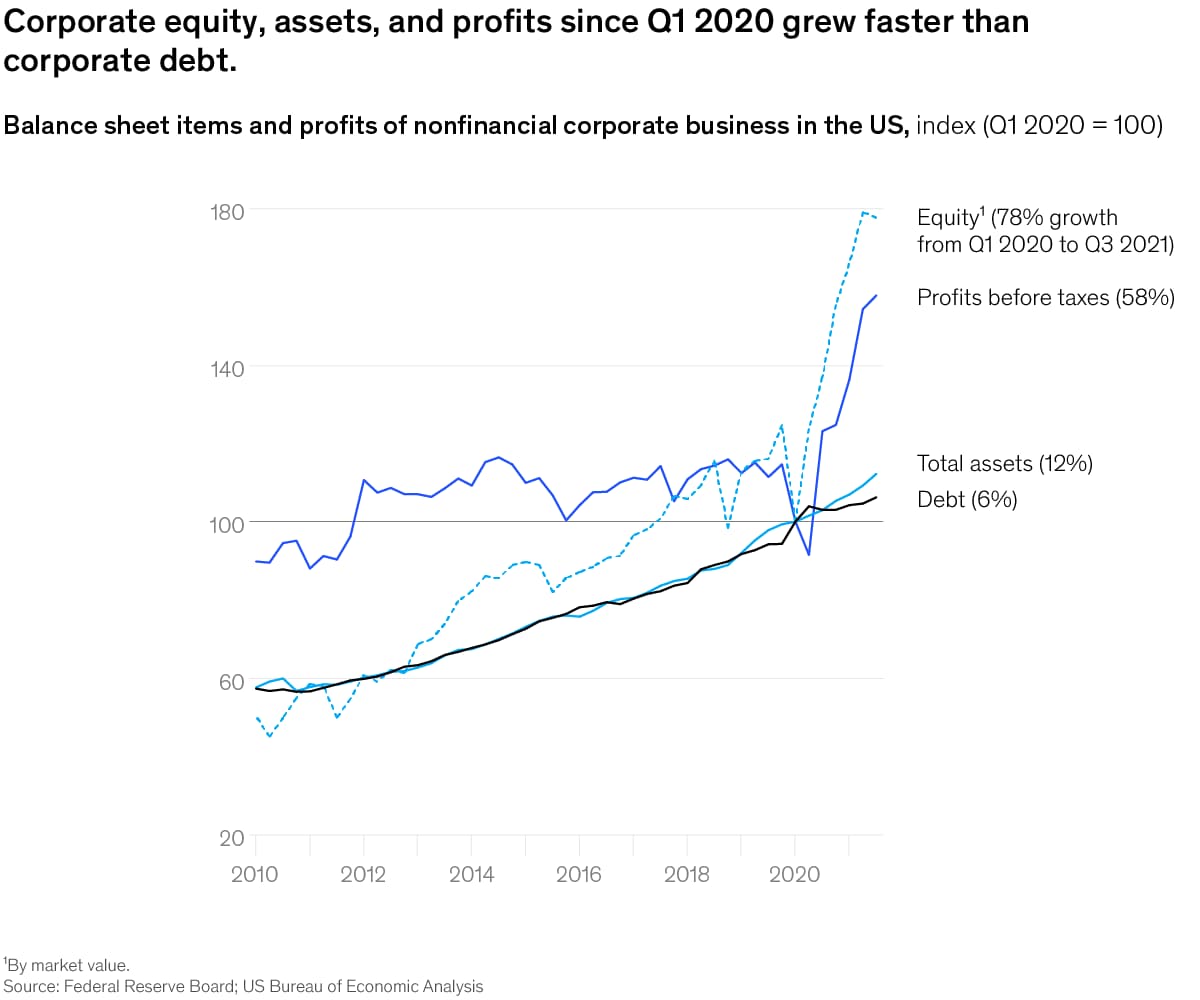
See today’s chart 
Also New 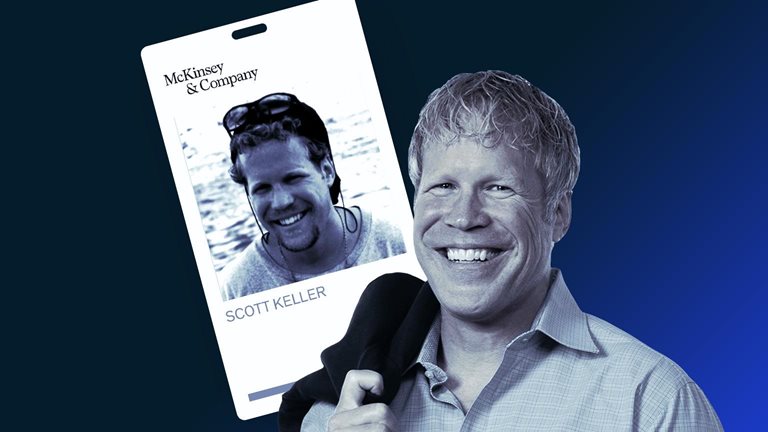

My Rookie Moment: Authorship McKinsey senior colleagues share their formative early-career experiences to help you navigate yours. Watch episode 7 


Cybersecurity trends: Looking over the horizon McKinsey examines three of the latest cybersecurity trends and their implications for organizations facing new and emerging cyberrisks and threats. Protect your tech 


From risk management to strategic resilience Senior executives at leading companies reveal their commitment to move from defensive risk management to a forward-looking stance based on strategic resilience. Plan for success 


Follow our thinking 



Share these insights Did you enjoy this newsletter? Forward it to colleagues and friends so they can subscribe too.
Was this issue forwarded to you? Sign up for it and sample our 40+ other free email subscriptions here.This email contains information about McKinsey’s research, insights, services, or events. By opening our emails or clicking on links, you agree to our use of cookies and web tracking technology. For more information on how we use and protect your information, please review our privacy policy. You received this email because you subscribed to the Daily Read newsletter. Manage subscriptions | Unsubscribe Copyright © 2022 | McKinsey & Company, 3 World Trade Center, 175 Greenwich Street, New York, NY 10007
by "McKinsey Daily Read" <publishing@email.mckinsey.com> - 06:09 - 17 Mar 2022 -
Webinar starting in an hour ⏰ Learn how to calculate global compensation! 🏆
Webinar starting in an hour ⏰ Learn how to calculate global compensation! 🏆
It's not too late to join the live event!
It's starting at 3:00pm UTC / 3:00pm GMT / 11:00am EST
Three of Remote's global compensation experts host a special event to share their experiences, insights, and tips on how to create a fair, comprehensive, and equitable compensation philosophy for your distributed team.
How do you practice fair equity?
You received this email because you are subscribed to Events communication from Remote Technology, Inc.
Update your email preferences to choose the types of emails you receive.
Unsubscribe from all future emailsRemote Technology, Inc.
Copyright © 2022 Remote Technology, Inc. All rights reserved.
18 Bartol St. #1163 San Francisco California
by "Remote" <hello@remote-comms.com> - 10:15 - 17 Mar 2022 -
Wish you a Happy Holi
Wish you a Happy Holi
Dear MD Abul Khayer,
Team InfodriveIndia wishes you and your family.
May you be bestowed with health, prosperity and success in your business.
Happy Holi 2022 !!!
Delhi:
F-19, Pocket F, Okhla Phase-1,
Okhla Industrial Area,
New Delhi- 110020, India
Kolkata:
Tower-C-ll, Ground Floor, Candor Kolkata One Hi-Tech Structures Private Limited, IT/SEZ Plot No. - 1, 2, 3 and 3/1, Block DH Action Area 1-D, New Town Rajarhat Kolkata- 700156, West Bengal, India
+91-11-40703045 | delhi@infodriveindia.com | Infodriveindia | Eximguru
**InfodriveIndia is a marketing partner of Volza LLC, US**
Unsubscribe | View in Browser | Tell a Friend
This email is sent from md@infodriveindia.com to info@learn.odoo.com
F-19, Pocket F, Okhla Phase-1, Okhla Industrial Area, New Delhi, Delhi- 110020

by "Team Infodriveindia" <crm@infodriveindia.com> - 08:44 - 17 Mar 2022 -
[Online training] Join free workshops to level up your observability skills
New Relic offers free online training to help level up your skills in observability and monitoring. This month, deep dive into error management and logs, or take our two-day Full-Stack Observability platform course.
Each hands-on, practical workshop is led by expert instructors. You will receive a link to the recording and full course notes and labs afterwards. Webinars typically run between 90 and 120 minutes and cover different levels of experience, from fundamentals to advanced.
Full-Stack Observability | 21 & 22 March, 10 am - 3 pm GMTError Management in New Relic | 29 March, 4 - 5:30 pm GMT
Maximizing Observability with Logs | 30 March, 4 - 5:30 pm GMTNew Relic
31-36 Golden Ln, Dublin 8, D08 A5RV, Ireland | +353 (01) 687 6808 | newrelic.comThis email was sent to info@learn.odoo.com as a result of subscribing or providing consent to receive marketing communications from New Relic.
You can tailor your email preferences at any time here.Send to a Friend · Unsubscribe · View this online · Privacy Policy
© 2008-21 New Relic, Inc. All rights reserved
by "New Relic EMEA" <emeamarketing@newrelic.com> - 06:16 - 17 Mar 2022 -
The real-estate business is trending green. What will future portfolios look like?
McKinsey&Company
Greening real estate .

New developments In the news • Greener buildings, stronger portfolios. The idea that people are willing to pay more for sustainable buildings has often been debated. But according to a 2018 study, rental and sales prices included a 6.0% and 7.6% premium, respectively, for green-certified buildings. Moreover, 63% of leading investors agree that greening strategies can lead to higher occupancy, rents, and overall value. Consequently, more leaders are considering how the financial risks of inaction might affect future portfolio values. Vivid Economics, a McKinsey company, estimates it will cost $5.2 trillion over the next decade to decarbonize the built environment. [WEF] • Turn down the lights. In Asia, solutions for decarbonizing the industry are emerging from both the public and private sectors. In Hong Kong and mainland China, for example, one real-estate company is offering tenants free energy audits as a way to understand energy consumption better. In addition, one Asian country has launched a fund that provides businesses with incentives to make their industrial facilities more energy efficient, covering up to half of the qualifying costs. Such cross-stakeholder efforts could be key to helping the industry reach net zero. [Fortune] 
A study of a diversified equity portfolio found that climate risks could reduce annual returns toward the end of the decade by as much as 40%. 
Our insights • Reassessing value. Real estate drives approximately 39% of global emissions, largely from the manufacturing of materials used in construction (such as steel and cement) and the energy consumed by buildings. That carbon footprint, along with other factors—like the physical threats of storms, floods, fires, and extreme heat—has led to a reckoning on asset valuations. Several major real-estate companies have conducted internal analyses and found that potential losses for some debt portfolios could double over the next several years. • Reenergizing real estate. Decarbonizing existing buildings to meet new regulations can be costly. For example, it could take up to $24.3 billion to retrofit the 50,000 buildings covered by New York City’s decarbonization law. However, there’s an opportunity for real-estate leaders to both revalue and future-proof their portfolios while creating new sources of value—like outfitting buildings with solar arrays and batteries so properties can double as local sources of energy generation and storage. See three actions real-estate leaders can take to thrive during the climate transition. — Edited by Andrew Simon Get real 
Was this forwarded to you? Sign up here. Or send us feedback — we’d love to hear from you. 

Follow our thinking 


This email contains information about McKinsey’s research, insights, services, or events. By opening our emails or clicking on links, you agree to our use of cookies and web tracking technology. For more information on how we use and protect your information, please review our privacy policy. You received this email because you subscribed to the On Point newsletter. Manage subscriptions | Unsubscribe Copyright © 2022 | McKinsey & Company, 3 World Trade Center, 175 Greenwich Street, New York, NY 10007
by "McKinsey On Point" <publishing@email.mckinsey.com> - 12:24 - 17 Mar 2022 -
How to inspire responsible tech product management
the Daily read
Step toward innovation .
Share this email 



AN ARTICLE A DAY, PICKED BY OUR EDITORS 
Inclusion, privacy, and sustainability—these key aspects of responsible stewardship often trail behind performance as a priority during tech development. Innovating responsibly requires meeting evolving customer and regulatory concerns on data use, the planet, and combatting bias. It’s quickly becoming a core value of tech. But as critical as it is, the intangibility of ‘responsibility’ can make it difficult to facilitate. Don’t miss a new article on strategies product managers can take to instill values of responsible innovation, design, and management into their own organizations. — Sarah Skinner, digital editor, New York 
Responsible product management: The critical tech challenge Prioritizing privacy, sustainability, and inclusion will soon be essential to successful tech development. For product managers to make responsible innovation a core discipline, companies must first lay the foundation. Step toward innovation 

Quote of the Day “Sometimes something unexpected could be a latent interest or something that can give you a lot of purpose. Both can be of service to others and give you a lot of satisfaction and joy. So we have to be always on the lookout for opportunities to express ourselves beyond what we do in our day jobs.” —Manish Chopra, senior partner, on his experience writing a book in the latest episode of My Rookie Moment 
Chart of the Day 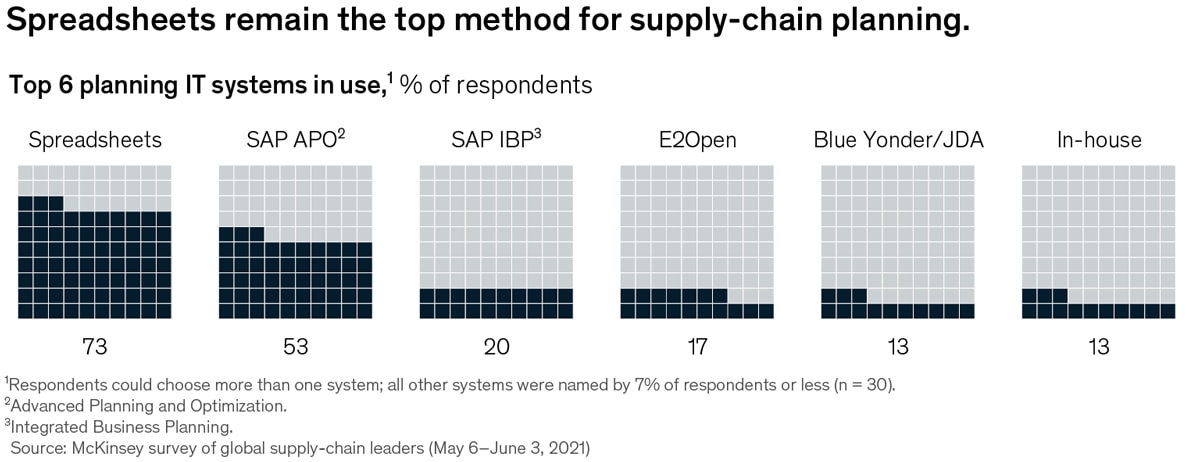
See today's chart 
Also New 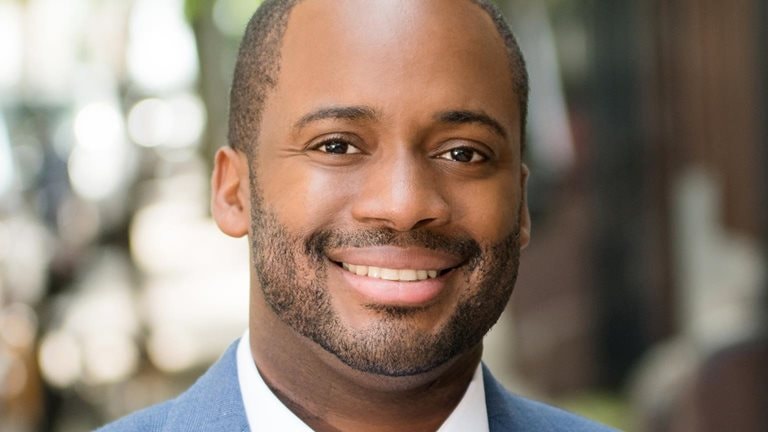

Health equity: Activating meaningful change The COVID-19 pandemic has highlighted longstanding health and social inequities in healthcare and raised the urgent question of how health equity can be achieved. Address the issues 


IoT comes of age McKinsey research shows that adoption of IoT technologies has increased exponentially the past five years—but successful implementation still eludes some. Here’s how to get it right. Connect physical and digital worlds 


The mainstreaming of additive manufacturing After 40 years of development, what will it take for additive manufacturing to become more than a niche technology? Create a healthier planet 


Follow our thinking 



Share these insights Did you enjoy this newsletter? Forward it to colleagues and friends so they can subscribe too.
Was this issue forwarded to you? Sign up for it and sample our 40+ other free email subscriptions here.This email contains information about McKinsey’s research, insights, services, or events. By opening our emails or clicking on links, you agree to our use of cookies and web tracking technology. For more information on how we use and protect your information, please review our privacy policy. You received this email because you subscribed to the Daily Read newsletter. Manage subscriptions | Unsubscribe Copyright © 2022 | McKinsey & Company, 3 World Trade Center, 175 Greenwich Street, New York, NY 10007
by "McKinsey Daily Read" <publishing@email.mckinsey.com> - 06:20 - 16 Mar 2022










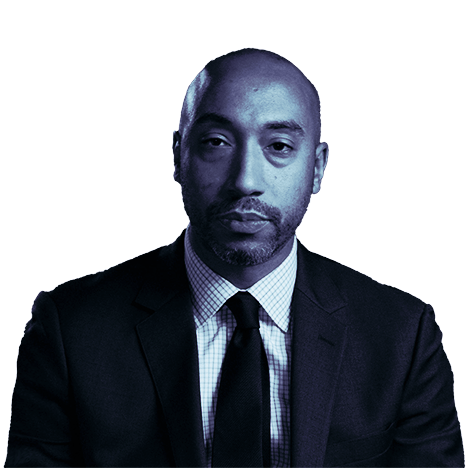





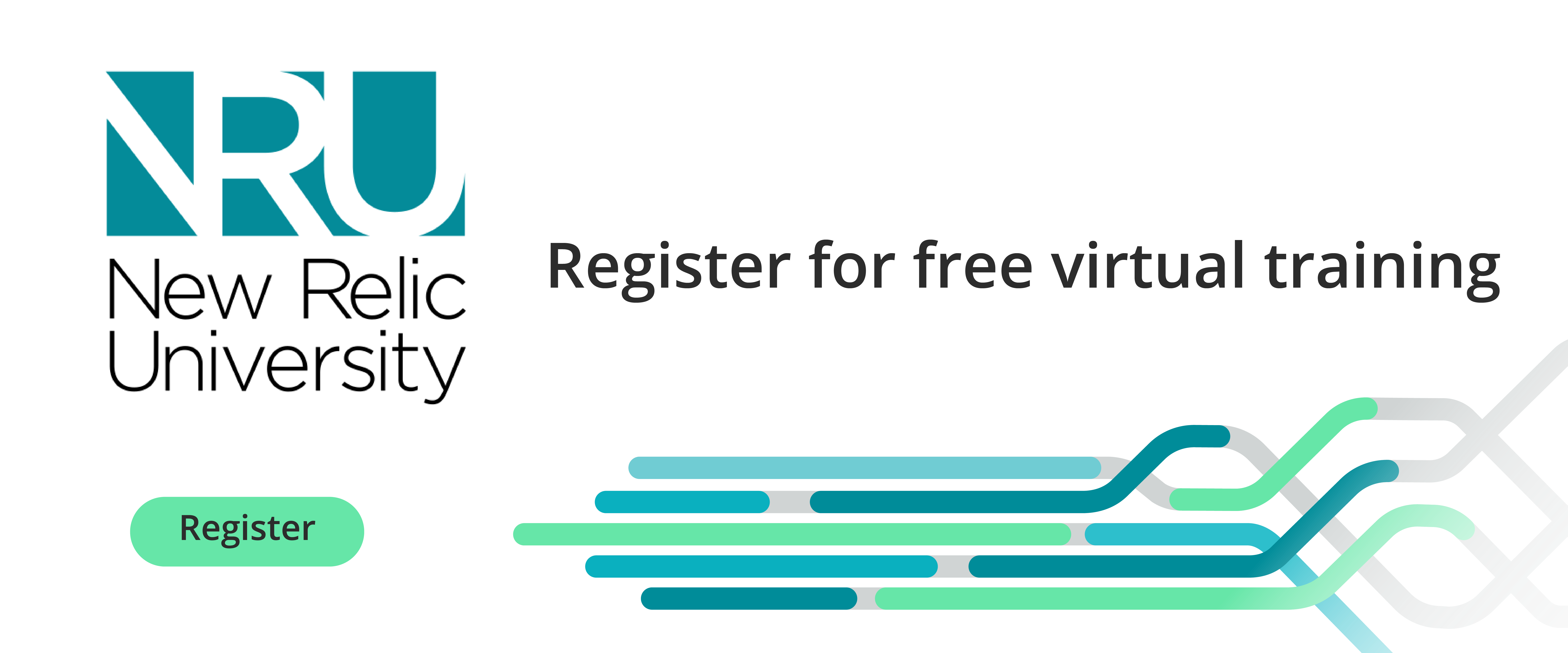
FOLLOW US: